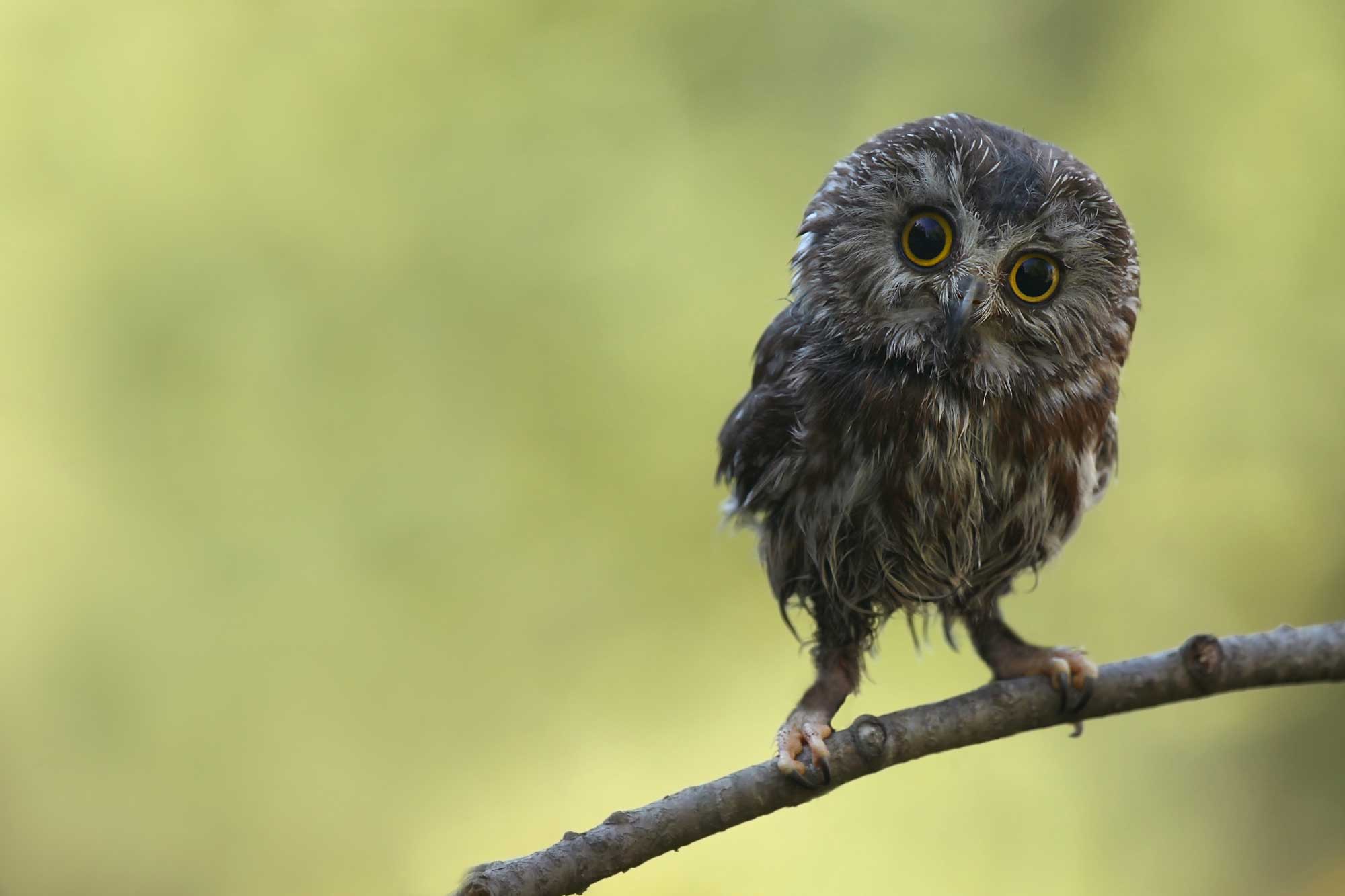Think you know owls? Northern saw-whet owls defy our expectations

When you think about owls, what comes to mind? Large, hooting creatures of the night? Well, northern saw-whet owls defy some — but not all — of those expectations.
Northern saw-whet owls are nocturnal, almost exclusively so, but they certainly aren't large, and they definitely don't hoot. These owls are among the smallest in the world, about the size of a robin, according to the Cornell Lab of Ornithology. They stand between 7 inches to 8 inches tall and weigh just 2 ounces to 5 ounces. Compare that to the more familiar great horned owl, which can stand 2 feet tall and weigh between 2 pounds and 5 pounds. Tiny northern saw-whet owls are much closer in size to the world's smallest owl, the elf owl, which lives in the American Southwest. Elf owls are the smallest raptor in the world, standing only 4 inches to 6 inches tall and weighing less than 2 ounces.
These diminutive owls don't hoot either. In fact, many owls don't hoot like great horned owls do. Northern saw-whet owls sing out a melodic "too-too-too-too-too." Males sing to mark their territory and solicit a mate, but females also sometimes sing while seeking a partner. These owls were named for their song, which is said to sound similar to a whetstone being used to sharpen a saw, according to the National Audubon Society.
One thing northern saw-whet owls do have in common with many owls is their nocturnal lifestyle. They hunt almost exclusively by night, sitting patiently on a perch while looking and listening for prey and then swooping down for the catch, the Audubon Society reports. Their preferred food is mice, but they also eat other small rodents like voles, shrews, chipmunks and squirrels as well as small birds and large insects.
If you go out in search of these owls, don't be surprised if you come up short. While they are common across their range, they aren't often seen, according to Cornell Lab. They live coast to coast across much of the northern United States and southern Canada as well as parts of the Southwest and Mexico, preferring mature forests.
In Illinois, they can be found in the northern part of the state year-round, and some of these owls from the northern edges of the territory may also winter in the southern half of the state, according to the Illinois Department of Natural Resources. They are thought to be more common than known because of their secretive nature.
During the day, northern saw-whet owls roost in trees, often just above a person's eye level near the tree trunk, Cornell Lab reports. When day turns to night and the time comes to hunt, they often stay at that level, giving them a good vantage point for seeing rodents scurrying on the ground below.
As adults, they have mostly brown plumage that helps them blend in. Their round faces are brown with white mottling, and they have bright yellow eyes. Young saw-whet owls look quite a bit more striking than their adult counterparts, with cinnamon-colored bellies and chocolate brown faces with a white V above the eyes.
A mated pair of northern saw-whet owls is usually monogamous, but males may have more than one female mate when the food supply is good. Males start calling for a mate as early as January, even before females arrive on their breeding territory, and may continue through May, the Cornell Lab reports.
Northern saw-whet owls typically nest in cavities built and previously used by other birds, often pileated woodpeckers or northern flickers. The female will lay her eggs in the soft bed of the previous nest, and they will hatch a little less than a month later, according to the Peregrine Fund. Once the eggs hatch, the female keeps the owlets warm and safe and the male brings food back to the nest for the babies and their mother.
Baby owls stay in the nest for four to five weeks before fledging, the Peregrine Fund reports. After fledging, they are still reliant on their parents for food and support for a few more months. They are fully independent after about three months, and some may reproduce during their first year.
